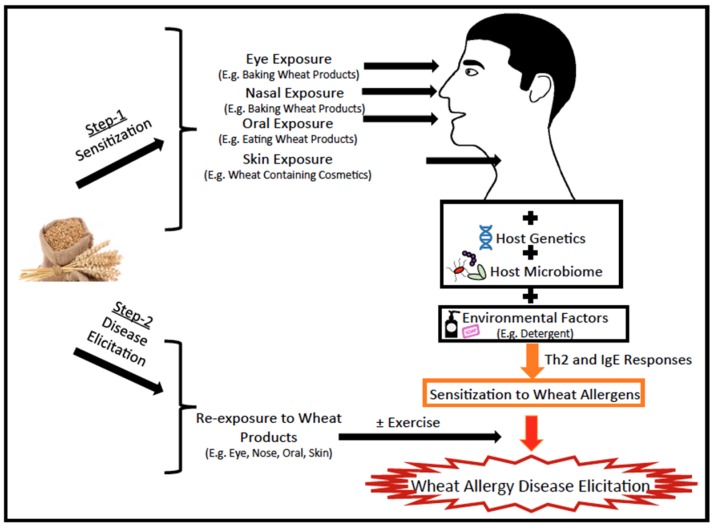Figure 1.
The genesis of wheat allergy: sensitization and elicitation of disease. Development of wheat allergy involves two steps: Step-1: Exposure of genetically susceptible subject to wheat products via the eye, nasal, oral, and skin routes in the context of a dysregulated host-microbiome and additional environmental co-factors, such as detergents in facial soap containing wheat allergens, activate the T helper (Th)-2 immune responses with consequent IgE antibody production. These antibodies load the mast cells and basophils, resulting in the immune state termed as sensitization. Step-2: Re-exposure of sensitized subjects to wheat results in the binding of allergens to IgE-loaded mast cells and basophils that release histamine and other inflammatory mediators, causing clinical symptoms of disease (diarrhea, vomiting, hives, rashes, dermatitis, conjunctivitis, rhinitis, asthma, or anaphylaxis). In some cases, exercise after exposure to wheat can trigger anaphylaxis in sensitized subjects.

